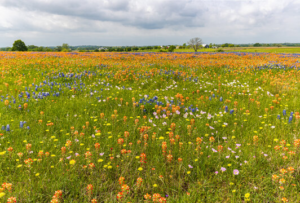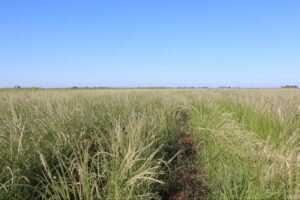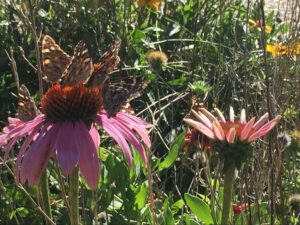Native seed blends are the key to biodiversity and conservation.
They’re essential for restoring land, boosting soil health, and creating habitats that wildlife thrive in.
Think of them as nature’s toolkit: designed to work with the land, not against it.
If you’re tackling a reclamation project, managing grazing lands, or leading large-scale conservation efforts, these blends are your go-to solution.
Why? Because they’re adaptable, cost-effective, and good for the planet.
Let’s break down how native seed blends can help you achieve your goals — and how to make them work for your specific needs.
What Are Native Seed Blends?
Native seed blends are made up of plants native to a specific region or ecosystem.
Unlike non-native species that can throw local ecosystems off balance, these plants are perfectly adapted to thrive in their home environment.
They naturally use water more efficiently, need fewer nutrients, and are tougher against pests and diseases.
These blends typically combine grasses, forbs, and shrubs designed to serve the land in multiple ways — reducing soil erosion, enhancing soil health, and supporting wildlife.
They’re not just plants; they’re a cornerstone for any successful land management or restoration project.
What Can Happen If You Don’t Use Native Seed Blends?
Example: A reclamation project in the Midwest used a nonnative blend of Kentucky 31 Tall Fescue to stabilize eroded slopes.
While it initially provided ground cover, the fescue quickly outcompeted native species and formed a monoculture.
The plant’s thick root system prevented native wildflowers and grasses from regenerating, reducing biodiversity.
Moreover, the endophyte fungi in Tall Fescue are toxic to grazing livestock, causing health issues and economic losses for nearby farmers.
Instead of restoring the land, the project created long-term challenges for both agriculture and ecology.
Enhancing Biodiversity with Native Seed Blends
Biodiversity — the variety of life in an ecosystem — is essential for keeping those systems healthy and thriving.
Native seed blends are an expert-level tool for boosting biodiversity because they create diverse, sustainable habitats where wildlife can flourish.
Supporting Pollinators
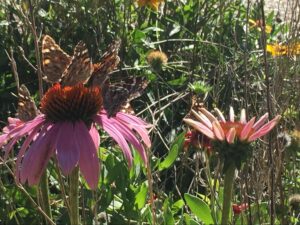
Native plants are the best way to support pollinators like bees, butterflies, and other insects.
For example, planting native wildflowers such as Black-eyed Susan and Indian Blanket provides vital nectar and pollen sources for pollinators, whose populations are declining globally.
As you plan your restoration project, consider using wildflower seed blends designed specifically for attracting and sustaining local pollinators.
Attracting Beneficial Wildlife
Besides pollinators, native seed blends also provide food and habitat for a wide range of animals, from birds to small mammals.
Grasses like Switchgrass and Little Bluestem offer cover for birds, while native shrubs such as Fourwing Saltbush provide a food source for small mammals and birds.
By using a seed blend that incorporates a variety of species, you ensure that the ecosystem supports a healthy balance of wildlife.
Native Seed Blends and Conservation Goals
Incorporating native seed blends into conservation practices helps restore natural ecosystems, prevent erosion, and support sustainable land management. Here’s how these blends contribute to various conservation efforts:
Erosion Control
Erosion control is a critical concern for conservationists and land managers.
Depending on your location, native grasses like Big Bluestem and Sideoats Grama have deep, extensive root systems that help stabilize the soil, reducing erosion in disturbed or degraded areas. These plants are particularly effective in high-traffic areas, reclaimed mine sites, and areas with steep slopes.
Example: A reclamation project in West Texas can use native seed blend to successfully stabilize soils after mining. The deep roots of Buffalograss and Indiangrass provide natural erosion control, while also reducing the need for expensive, synthetic erosion prevention methods.
Soil Health Improvement
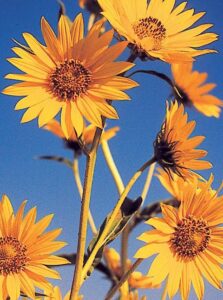
Native plants improve soil structure and health by promoting organic matter and enriching the soil.
For example, species like Maximillian Sunflower and Illinois Bundleflower improve soil fertility by providing organic matter as they decompose. Additionally, these plants’ deep roots enhance water infiltration, reduce runoff, and contribute to carbon sequestration.
If they are native to your region, consider integrating Switchgrass or Little Bluestem into your project to help restore degraded soils, increase water retention, and support plant growth. These grasses thrive in nutrient-poor soils, making them ideal for reclamation projects that aim to restore soil health.
Practical Applications of Native Seed Blends in Reclamation Projects
Native seed blends are valuable for a variety of large-scale land restoration projects, offering multiple ecological benefits in addition to their aesthetic value. Here’s how different types of land managers can benefit from using these blends:
For Reclamation Project Managers
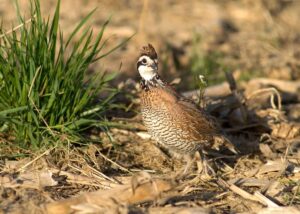
Reclamation projects often involve restoring land disturbed by mining, oil and gas activities, or construction.
Native seed blends are a cost-effective and sustainable solution for land rehabilitation. The use of plants like Western Wheatgrass and Indiangrass can help reintroduce critical ecosystem functions, such as erosion control, habitat restoration, and water filtration.
For instance, a successful reclamation project in the oil fields of West Texas used native seed blends to restore soil health and provide habitat for local wildlife.
By selecting appropriate grasses, shrubs, and forbs, the project not only stabilized the soil but also created a rich ecosystem for birds, pollinators, and small mammals.
For Soil Conservationists
Soil conservationists understand the importance of maintaining healthy soil for future land productivity.
Native seed blends, with their drought resistance and ability to reduce soil erosion, are an excellent solution for maintaining healthy soil in conservation programs. A blend of native grasses like Sideoats Grama and legumes like Purple Prairie Clover or Illinois Bundleflower can help improve soil structure, increase organic matter, and promote biodiversity.
Incorporating native species into crop rotation systems also helps prevent soil depletion and pest buildup, ultimately leading to more sustainable farming practices.
For Rangeland Managers
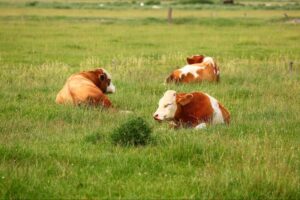
Rangeland managers rely on sustainable plant cover to support grazing operations.
Native grasses like Buffalograss and Little Bluestem can provide high-quality forage for livestock, while also supporting biodiversity and maintaining soil health. These grasses are more drought-tolerant and resilient than non-native species, making them ideal for arid rangeland conditions.
Using native seed blends for grazing lands can also reduce the need for irrigation and chemical inputs, contributing to both environmental conservation and cost savings for ranchers.
For Environmental Consultants
Environmental consultants often help clients navigate land restoration, ecosystem management, and sustainability projects.
Native seed blends are an essential tool, offering sustainable solutions for soil erosion, habitat restoration, and the creation of wildlife corridors.
Working with a trusted seed supplier ensures that environmental consultants can provide their clients with tailored, region-specific seed mixes for the best ecological outcomes.
One such example is a project in Texas that involved using native seed blends for habitat restoration on a former industrial site. The native plants not only restored soil health but also reintroduced important plant species that had been lost due to industrial activity.
Choosing the Right Native Seed Blend for Your Project
Selecting the right native seed blend for your project can make the difference between a successful restoration and an underwhelming outcome. Here are some factors to consider:
- Climate: Choose species that are well-adapted to your region’s temperature, rainfall, and seasonal conditions. For example, Buffalograss thrives in dry, arid conditions, while Switchgrass does well in more humid regions.
- Soil Type: Make sure the plants in your blend are suited to the soil type at your site. For example, Sand Lovegrass or Sand Dropseed are excellent for sandy soils, while Big Bluestem or Blue Grama thrive in clay-rich soils. Check Seed-Spec for your preliminary research.
- Project Goals: Whether you’re focused on erosion control, creating wildlife habitat, or restoring grazing land, select a blend that includes plants suited for your specific goals.
For expert guidance, consult with a native seed supplier like Bamert Seed Company, who can help you choose the right blend for your project’s unique needs.
Restore and Rebuild with Native Seed Blends
Native seed blends are an invaluable tool for anyone involved in land restoration, reclamation, or conservation. They offer ecological, environmental, and financial benefits, contributing to improved biodiversity, soil health, and sustainable land management.
Ready to purchase your native seed blends? Fill out a contact form to connect with a specialist who can help you make the right seed selection for your project.
For more guidance on selecting the right native grasses or to discuss your specific reclamation needs, reach out to us at Bamert Seed Company.
Let’s work together to grow something sustainable!

